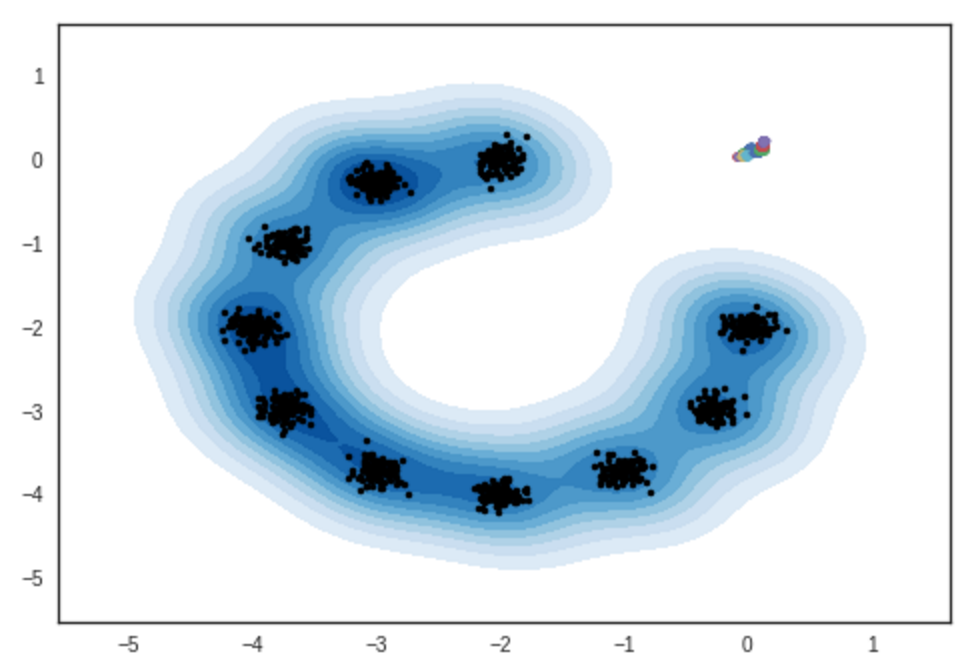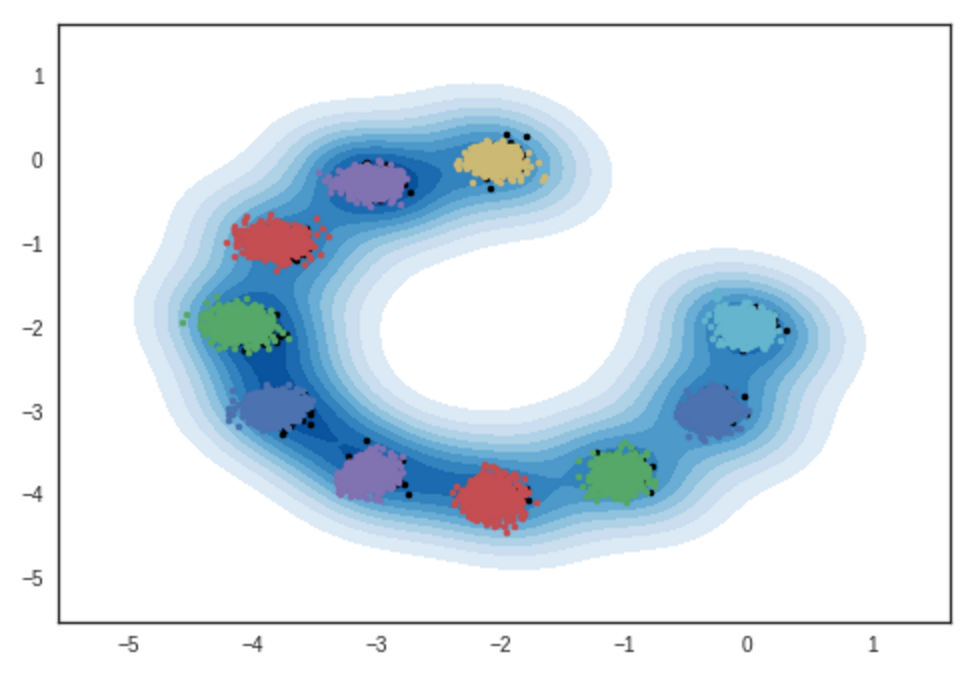PyTorch implementation of Learning to Discover Cross-Domain Relations with Generative Adversarial Networks.
* All samples in README.md are genearted by neural network except the first image for each row.
* Network structure is slightly diffferent (here) from the author's code.
- Python 2.7
- Pillow
- tqdm
- PyTorch
- torch-vision
First download datasets (from pix2pix) with:
$ bash ./data/download_dataset.sh dataset_name
facades: 400 images from CMP Facades dataset.cityscapes: 2975 images from the Cityscapes training set.maps: 1096 training images scraped from Google Mapsedges2shoes: 50k training images from UT Zappos50K dataset.edges2handbags: 137K Amazon Handbag images from iGAN project.
or you can use your own dataset by placing images like:
data
├── YOUR_DATASET_NAME
│ ├── A
│ | ├── xxx.jpg (name doesn't matter)
│ | ├── yyy.jpg
│ | └── ...
│ └── B
│ ├── zzz.jpg
│ ├── www.jpg
│ └── ...
└── download_dataset.sh
All images in each dataset should have same size like using imagemagick:
# for Ubuntu
$ sudo apt-get install imagemagick
$ mogrify -resize 256x256! -quality 100 -path YOUR_DATASET_NAME/A/*.jpg
$ mogrify -resize 256x256! -quality 100 -path YOUR_DATASET_NAME/B/*.jpg
# for Mac
$ brew install imagemagick
$ mogrify -resize 256x256! -quality 100 -path YOUR_DATASET_NAME/A/*.jpg
$ mogrify -resize 256x256! -quality 100 -path YOUR_DATASET_NAME/B/*.jpg
# for scale and center crop
$ mogrify -resize 256x256^ -gravity center -crop 256x256+0+0 -quality 100 -path ../A/*.jpg
To train a model:
$ python main.py --dataset=edges2shoes --num_gpu=1
$ python main.py --dataset=YOUR_DATASET_NAME --num_gpu=4
To test a model (use your load_path):
$ python main.py --dataset=edges2handbags --load_path=logs/edges2handbags_2017-03-18_10-55-37 --num_gpu=0 --is_train=False
Result of samples from 2-dimensional Gaussian mixture models. IPython notebook
# iteration: 0:
# iteration: 10000:
# iteration: 11200:
x_A -> G_AB(x_A) -> G_BA(G_AB(x_A)) (shoe -> handbag -> shoe)
x_B -> G_BA(x_B) -> G_AB(G_BA(x_B)) (handbag -> shoe -> handbag)
x_A -> G_AB(x_A) -> G_BA(G_AB(x_A)) -> G_AB(G_BA(G_AB(x_A))) -> G_BA(G_AB(G_BA(G_AB(x_A)))) -> ...
# iteration: 9600:
x_A -> G_AB(x_A) -> G_BA(G_AB(x_A)) (color -> sketch -> color)
x_B -> G_BA(x_B) -> G_AB(G_BA(x_B)) (sketch -> color -> sketch)
x_A -> G_AB(x_A) -> G_BA(G_AB(x_A)) -> G_AB(G_BA(G_AB(x_A))) -> G_BA(G_AB(G_BA(G_AB(x_A)))) -> ...
# iteration: 9500:
x_A -> G_AB(x_A) -> G_BA(G_AB(x_A)) (color -> sketch -> color)
x_B -> G_BA(x_B) -> G_AB(G_BA(x_B)) (sketch -> color -> sketch)
x_A -> G_AB(x_A) -> G_BA(G_AB(x_A)) -> G_AB(G_BA(G_AB(x_A))) -> G_BA(G_AB(G_BA(G_AB(x_A)))) -> ...
# iteration: 8350:
x_B -> G_BA(x_B) -> G_AB(G_BA(x_B)) (image -> segmentation -> image)
x_A -> G_AB(x_A) -> G_BA(G_AB(x_A)) (segmentation -> image -> segmentation)
# iteration: 22200:
x_B -> G_BA(x_B) -> G_AB(G_BA(x_B)) (image -> segmentation -> image)
x_A -> G_AB(x_A) -> G_BA(G_AB(x_A)) (segmentation -> image -> segmentation)
Generation and reconstruction on dense segmentation dataset looks weird which are not included in the paper.
I guess a naive choice of mean square error loss for reconstruction need some change on this dataset.
# iteration: 19450:
x_B -> G_BA(x_B) -> G_AB(G_BA(x_B)) (image -> segmentation -> image)
x_A -> G_AB(x_A) -> G_BA(G_AB(x_A)) (segmentation -> image -> segmentation)
Taehoon Kim / @carpedm20



























































